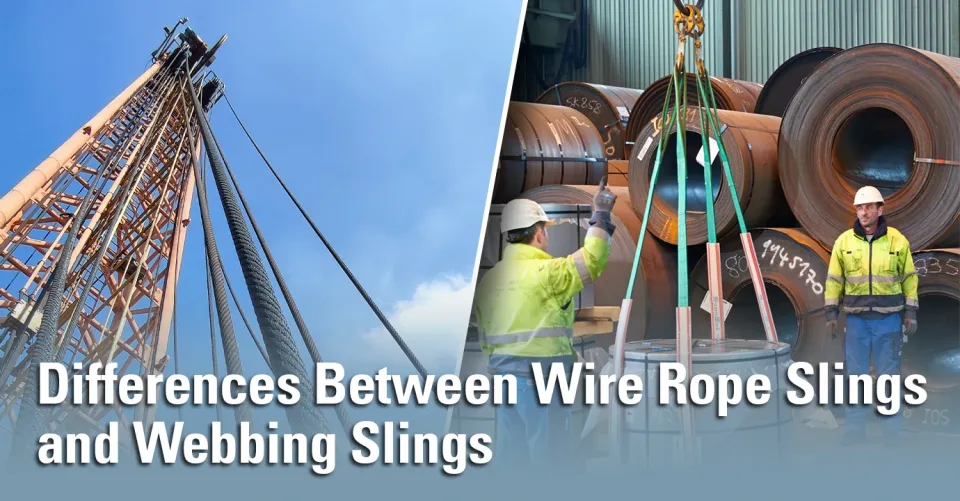
Differences Between Wire Rope Sling and Webbing Sling
When you need lifting equipment to assist with heavy loads, choosing the right type of sling is crucial. Two of the most commonly used slings are wire rope slings and webbing slings.
Both offer unique characteristics and advantages. So, which is more suitable for your needs? Let’s explore the differences between wire rope slings and webbing slings.

Differences Between Wire Rope Sling and Webbing Sling
Wire rope slings and webbing slings each have their strengths, depending on the job at hand. Here’s a closer look at the distinctions between the two:
1. Material and Strength
Wire rope slings are made of twisted steel wire, providing exceptional strength and durability. The twisting process enhances resistance to heavy loads and abrasion, making them ideal for demanding environments requiring high lifting capacity.
In contrast, webbing slings are made from synthetic materials like polyester, making them lightweight and flexible. However, they are more prone to wear when exposed to rough or sharp surfaces compared to steel. This makes webbing slings suitable for lifting loads with smooth surfaces or with protective sleeves for lighter to medium loads.
2. Environmental Resistance
Wire rope slings excel in resisting heat, alkali chemicals, and abrasion. Their ability to endure harsh working conditions makes them a top choice for construction projects or other heavy industries.
On the other hand, polyester-based webbing slings are more resistant to water and acidic chemicals, making them ideal for humid environments or when exposed to corrosive substances. This durability ensures longer usability in specific conditions where steel cables might corrode quickly. Selecting the right sling depends on the work environment.
Also watch: Want to Replace Wire Crane? Yes, but Don't Make a Mistake!
3. Flexibility and Load Safety
Webbing slings are highly flexible and gentle on the surfaces of lifted loads, reducing the risk of damage. Their soft material makes them ideal for lifting delicate items prone to scratches or deformation. Additionally, webbing slings adapt easily to irregularly shaped loads.
Conversely, wire rope slings are less flexible due to their rigid and tough material but offer higher stability for handling heavy loads.
4. Cost and Maintenance
Wire rope slings typically cost more than webbing slings due to the use of steel and their more complex manufacturing process.
Meanwhile, webbing slings are more affordable and require simpler maintenance. This affordability makes them a practical choice for companies with limited budgets that still need efficient lifting solutions.
Conclusion
Choosing between a wire rope sling and a webbing sling largely depends on your specific requirements and work environment. Both have unique characteristics that provide distinct advantages in certain situations.
SpanSet is here to assist you with a wide range of high-quality lifting tools. Our team is ready to offer the best recommendations tailored to your specific needs. Don’t hesitate to contact us and discover the best solutions for your lifting requirements!
For further consultation about SpanSet Indonesia products and services, please contact us via email at [email protected] or WhatsApp
To find specification detail and prices of SpanSet Indonesia Products, please visit SpanSet Indonesia Marketplace on Tokopedia and Shopee.